How to Keep Your Dog Cool This Summer: Essential Tips for Pet Safety
This post contains affiliate links. As an Amazon Associate I earn from qualifying purchases.
As temperatures start to rise in Florida, keeping your dog cool becomes a top priority for responsible pet owners.
Dogs can suffer from heatstroke if their body temperature gets too high, so it’s crucial to implement strategies that help manage their heat exposure.
Unlike humans, dogs don’t sweat through their skin and primarily rely on panting to cool themselves down, which isn’t as efficient in extreme heat.
You can help your canine friend stay comfortable and safe when the heat is on in several ways. Ensuring your dog has access to cool, fresh water throughout the day is fundamental to preventing dehydration.
Additionally, creating a cool environment inside your home will provide a much-needed respite from the scorching sun. This can include anything from using fans and keeping the curtains drawn, to providing a cooling mat or vest.
When venturing outside, timing is key. Opt for early morning or late evening walks when the temperature is lower. If the pavement is too hot for your bare feet, it’s too hot for your dog’s paws as well.
Remember to provide plenty of shade and water whenever you’re outdoors, and consider a lightweight and evaporative cooling vest to keep your dog comfortable during summer activities. Being mindful of these practices will help ensure that both you and your dog can enjoy the warmer weather safely.
Recognizing and Preventing Heat-Related Issues
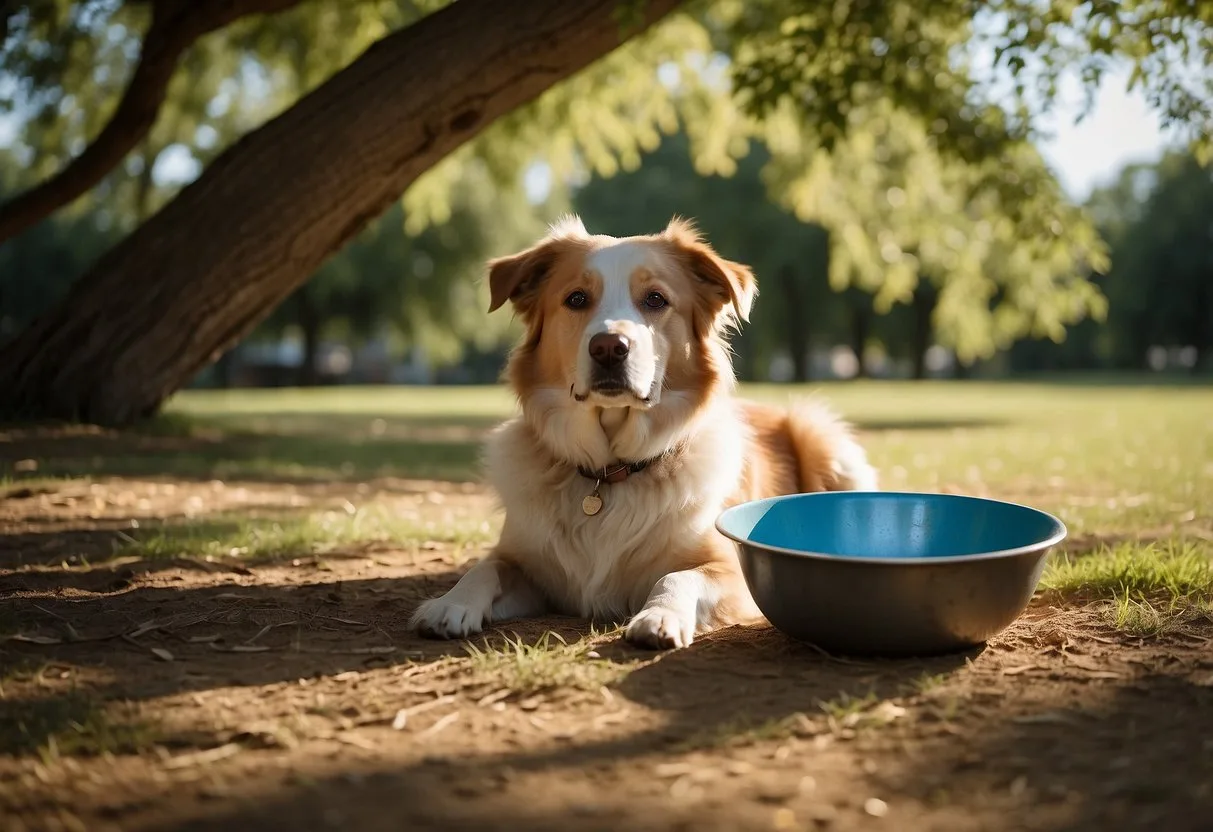 As summer temperatures rise, understanding how to identify heat-related issues and immediate actions to cool down your dog is essential for their health and safety.
As summer temperatures rise, understanding how to identify heat-related issues and immediate actions to cool down your dog is essential for their health and safety.
Identifying Signs of Overheating
Your dog can’t tell you when they’re too hot, so it’s crucial to recognize the signs of overheating.
Excessive panting, a dog’s primary cooling mechanism, can escalate to loud and labored breathing. Look for gums that are darker in color or feel tacky to the touch, which can signal dehydration.
Other concerning signs include vomiting, lethargy, or a collapse. Notice subtle changes like unexpected restlessness, which may indicate discomfort due to rising body temperatures.
Understanding Heatstroke and Dehydration
Heatstroke is a severe condition initiated by an elevated body temperature, and if not promptly addressed, it can be fatal. It’s characterized by symptoms such as excessive panting, rapid heart rate, and uncoordinated movement.
Dehydration enhances the risk, so it’s vital to ensure your dog stays well-hydrated—always provide ample cool water and shade.
Preventative measures include avoiding direct sunlight during peak hours and recognizing predisposed risk factors like obesity or heart disease.
Immediate Actions to Cool Down Your Dog
If you suspect your dog is overheated, it’s important to act quickly but without causing shock. Move your dog to a cooler area away from direct sunlight and encourage them to drink cool water.
You can also use cool, not cold, water to wet their body. Focus on areas with less fur and more blood flow, such as the paws and gums. Aiming a fan towards your dog can also aid in reducing their temperature.
If the situation does not improve rapidly, it’s critical to seek veterinary care to avoid progression to heatstroke. Immediate intervention is paramount for your dog’s safety and recovery from heat exhaustion.
Creating a Cool Environment
In the summer heat, ensuring your dog’s comfort requires more than just a shady spot. Consider integrating a few practical items to keep your dog cool and protected from overheating.
Sunscreen
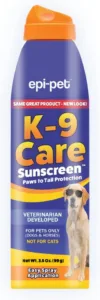
Just like humans, your dog’s skin can be vulnerable to UV rays, especially if they have a short or light-colored coat. Apply pet-safe sunscreen on their nose and ears or any area with less fur coverage. Remember to reapply, particularly after your dog has been swimming or has been outside for an extended period. My favorite pet safe sunscreen it K9 Care.
Cooling Mat
Cooling mats are specially designed to provide a cool surface for your dog to lie on. These mats usually contain a gel that absorbs your dog’s body heat. Place the cooling mat in your dog’s favorite resting spot or in their crate to give them a continuous cooling effect.
My favorite cooling mat is Green Pet Cooling Mat. The Green Pet Shop pressure-activated cooling pet mat provides chilled relief for your dogs and cats. It’s the perfect solution if your pet struggles to stay cool and comfortable in the summer heat.
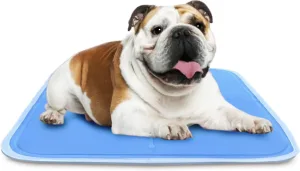
Cooling Bandana
A cooling bandana can be soaked in cold water and worn around your dog’s neck to help lower their body temperature. This accessory is particularly useful during walks or outdoor activities. We use the All for Paws Chill Out Ice Bandana.
Portable Fan
A portable fan can offer a well-ventilated spot indoors or in a shaded outdoor area. For an enhanced cooling experience, position a bowl of ice in front of the fan to circulate cooler air around your dog’s resting place.
Frozen Kong
Stuff a Kong toy with treat paste and freeze it to provide your dog with both a cooling treat and mental stimulation. This can be especially helpful in keeping your dog occupied and cool while you’re away or busy indoors.
SwimWays Paddle Paws Spring Float Dog Raft
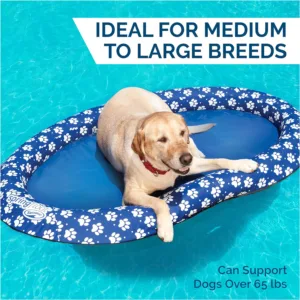
Cooling dogs down in the summer is easy when you can get them into water, but this might do the trick for dogs who don’t love to swim. This raft is great for lakes and pools; your dog can stay chill without having to dive in.
Ruffwear Cooling Vest
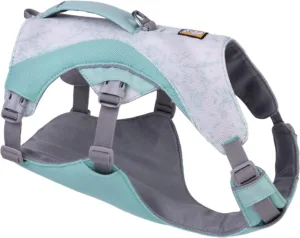
Looking for a durable dog top to keep your dog cool this summer? Why not try a RuffWear Cooling Vest. Keep these options in mind to maintain a comfortable and cool environment for your dog throughout the hot summer months. Your attention to their needs can prevent heat-related discomfort and health issues.
Proper Hydration
Ensuring your dog remains hydrated is pivotal during the hot summer months. Water is the essence of life, and your canine friend’s need for it increases as the temperature rises.
Offering Adequate Water Supply
Always have a supply of clean, fresh water accessible for your dog. Replenish their water throughout the day to preserve its coolness and cleanliness. Consider multiple water stations if your home has several floors or if you have an expansive yard.
Your dog should consume at least one ounce of water per pound of body weight daily as a general guideline. For instance, a 30-pound dog would need at least 30 ounces of water.
When taking walks or engaging in outdoor activities, carry a portable water bowl with you. Make regular stops to offer your dog water, ensuring they stay hydrated on the move.
Offer hydrating treats such as ice cubes or frozen fruits. Not only do they provide refreshments, but they also introduce an enjoyable way to keep cool.
Remember, the signs of dehydration can be subtle. If you suspect your dog is not adequately hydrated, contact your vet immediately for guidance.
The Importance of Regular Grooming
Regular grooming is pivotal for your dog’s comfort during the hot summer months. Proper grooming facilitates better airflow to your dog’s skin, allowing them to cool off more efficiently.
Without frequent brushing, dead fur can accumulate, insulating heat and potentially raising your dog’s body temperature to uncomfortable or even dangerous levels.
By maintaining a grooming routine, you also reduce the risk of skin infections which can occur when a dog is overheated. Matting of the fur can trap moisture and debris; keeping the fur neat and tangle-free prevents these issues.
It’s important to remember that different breeds have different grooming needs; while some may require a trim, others are better off with regular brushing alone.
If your dog has long or thick hair, regular grooming becomes even more crucial. It aids in temperature regulation and can help prevent heatstroke, a serious condition that requires immediate veterinary attention.
Additionally, grooming is a good opportunity to check for any signs of illness or discomfort. Look for hot spots, ticks, or other parasites that could affect your dog’s health—grooming isn’t just about keeping cool; it’s about overall well-being.
Lastly, grooming is a bonding activity that can help you connect with your dog. It’s a time when you can provide comfort and reassurance as you care for their physical health.
Take the time to ensure that your grooming tools, like clippers or brushes, are appropriate for your dog’s breed and coat type to prevent any discomfort or injury during the process.
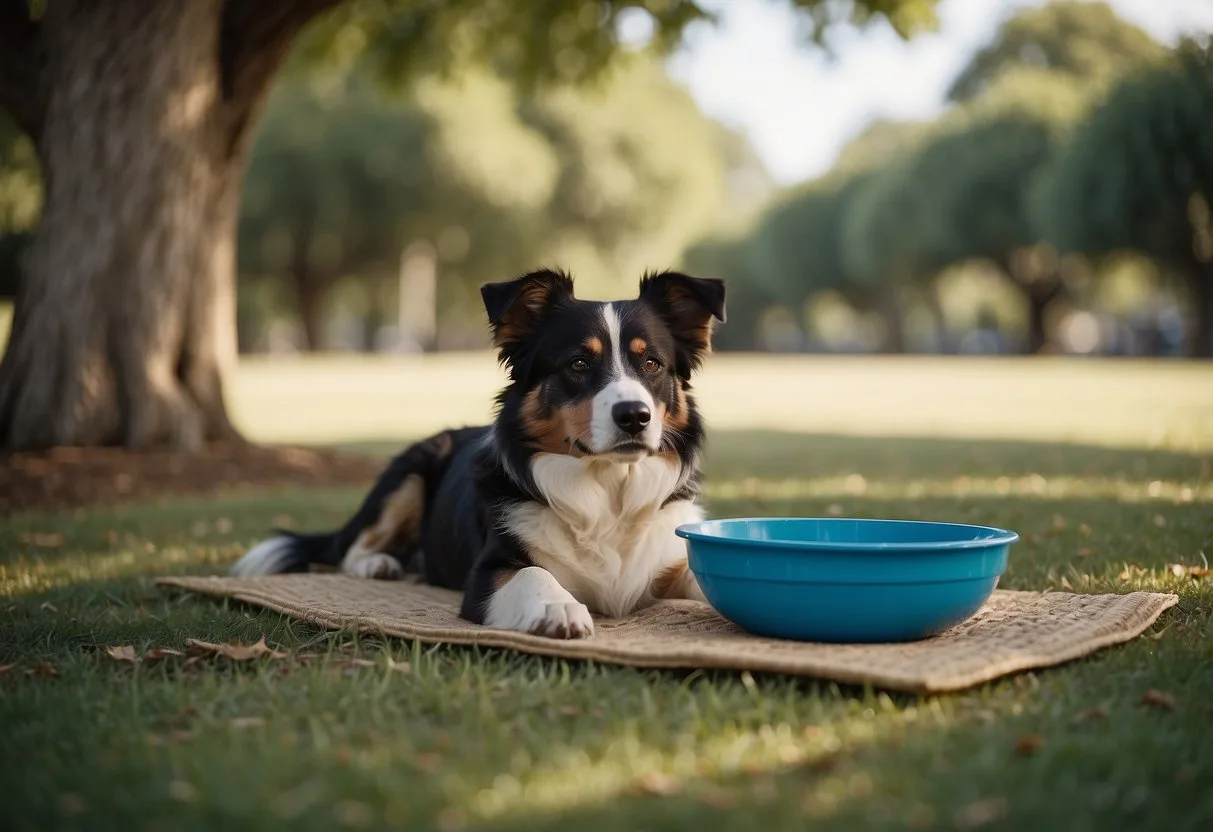
Ensuring your dog remains cool during summer requires proactive measures. Regularly check for signs of overheating, such as excessive panting, drooling, or lethargy. Remember these strategies:
- Frequent Hydration: Always provide clean, cool drinking water to help your dog stay hydrated. The right amount can vary, but a general guideline is one ounce of water per pound of your dog’s weight each day.
- Cool Environment: Establish a cool, shaded area for resting, whether indoors or outdoors. Use fans to keep air circulating and consider blackout curtains to reduce heat from sunlight.
- Active Cooling: Offer damp towels or mats or cooling vest or a cooling bandana for your dog and consider a doggie pool for them to splash in. For a more direct approach, rubbing alcohol applied to paws or ears can draw out heat efficiently but should be used sparingly and with caution.
Use these tips to help your dog enjoy the summer safely and comfortably. Remember to stay observant and adapt these methods to your dog’s needs and behaviors throughout the season.

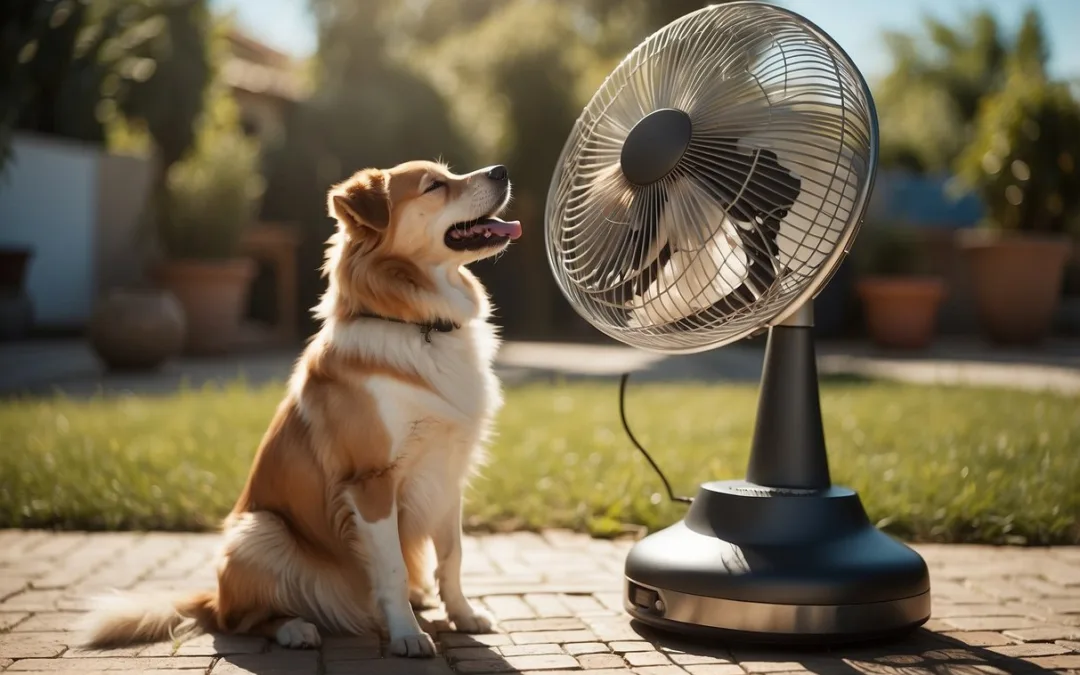
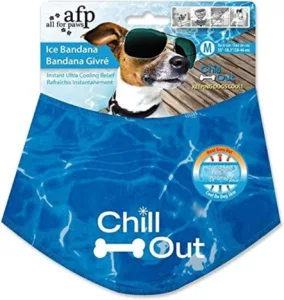
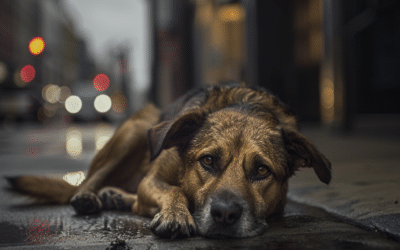
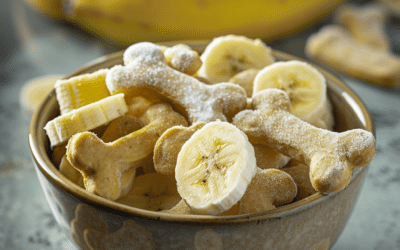

Recent Comments